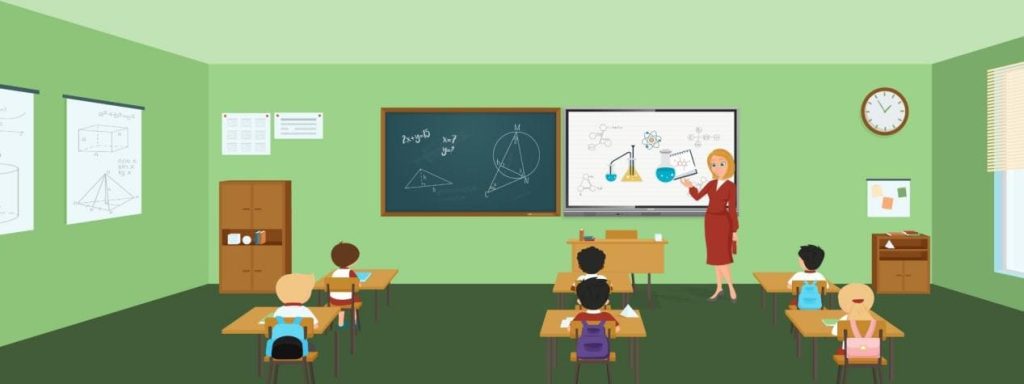Interactive Displays in the Classroom – Increase Children’s Engagement
Interactive learning has moved from an innovative strategy to a “must-do” to keep students engaged in the classroom. And students(especially the younger students who benefit from it) will be more focused on classroom learning because of novel teaching methods and interesting classroom experiences. Not only do interactive display support a connected and collaborative experience between students and teachers, and they can also be the link for interactive learning among students, even when they are learning remotely. As more features and apps became available on the monitors, teachers started using them regularly and saw an increase in student engagement and active learning in the classroom.
Research shows that teachers who effectively implement educational technologies such as interactive displays see increased student engagement; this in turn leads to improved learning.

The Benefits of Interactive Displays Include
1. Clear, bright images catch the eye and help students focus
2. Through screen-sharing software, there are more meaningful opportunities for collaboration among students
3. Improved accessibility for active learning for students with disabilities (e.g., fingers touching the screen instead of a stylus, which may be difficult for some students)
4. Efficient use of teaching time with out-of-the-box displays instead of wasting time while dealing with other technologies to facilitate lessons
5. Through simple training, teachers can master the basic knowledge of using built-in software and functions, and carry out teaching work efficiently.
6. As teachers become more familiar with interactive displays. Simple interactive teaching will not suffice to continue to enhance the development of collaborative learning in the classroom. So the idea of collaborative integration collaboration naturally emerged, facilitated by collaborative integration.
Here are simple ideas for using interactive displays to enhance collaboration.
5 Ways to Increase Collaboration Using Interactive Displays
1. Warm-up – Before entering the class, provide students with a simple project, after students have simple thinking and making, they will complete a simple presentation document. Then select students to share their answers.
They can annotate on the device by physically writing on the display or with the help of screen mirroring software. Because most students have personal devices (smartphones, tablets), their devices become “handheld interactive displays”.
2. New Interactive Lessons – A comprehensive interactive presentation option makes certain to consist of several educational software application applications or access to internet platforms that enable instructors to develop interactive lessons, assignments, and analyses.
Varied kinds of questions supply students with numerous possibilities to show findings at various cognitive levels (eg, multiple-choice recall, classification; specific labeling, company; short answers, and differences for abstracts).
3. Team Presentations—Use screen mirroring software in conjunction with interactive displays to allow class teams to present together, including students studying remotely. Responsibility for team projects can be shared equally, and student distance learning can play an active role in teamwork. Students can participate in collaborative classroom learning no matter where they are.
If you annotate a slide or ask a question during a presentation, you can save and share them. This adds a level of interactivity. And through the discussion between students can further improve students’ participation and learning enthusiasm.
4. Multiple Types of Devices Enhance the Smart Classroom Experience – share and analyze pictures and documents using the document camera. Large interactive displays with Ultra HD quality will display colorful, vivid images that enhance whole-class and collaborative discussions.
Using the PTZ camera to dynamically capture the students’ class situation can better analyze the content that students are interested in in the classroom, and then formulate better teaching plans based on the data. Many current monitors designed for education will include learning applications covering a variety of topics and topics.
5. Set Aside Time for Independent Study- The “self-learning” mentioned here means that students make their learning records through their understanding of the course and combine their ideas, and display their course experience and conclusions through interactive screens. Use the modifiable and easily marked features of the interactive screen to fully present your ideas and increase interactive learning among students.
Maybe it’s Time to Change Your Classroom
New teaching equipment brings new educational innovations. Especially now that almost everyone has a smartphone. When children are exposed to various smart devices every day, the traditional education model makes them feel bored and cannot concentrate in class. Maybe you need to consider trying new teaching methods to increase their love for the classroom using the interactive devices that young people prefer.
If this is your intention, then the ValueSTek interactive screen will be your first choice. We have always been determined to innovate the classroom with interactive technology and help every teacher to complete their teaching plan better.































